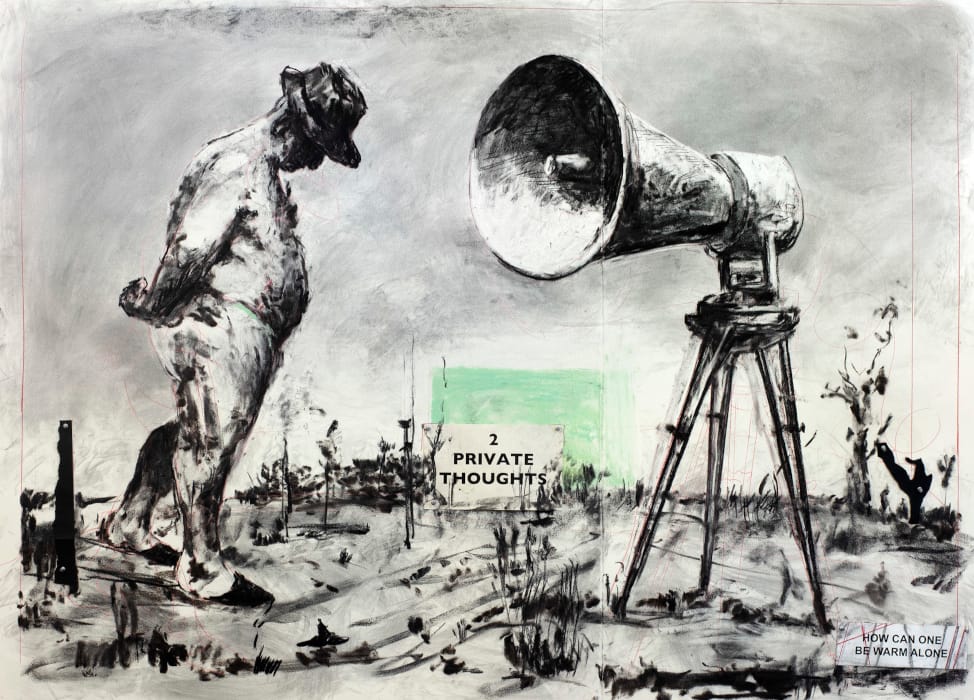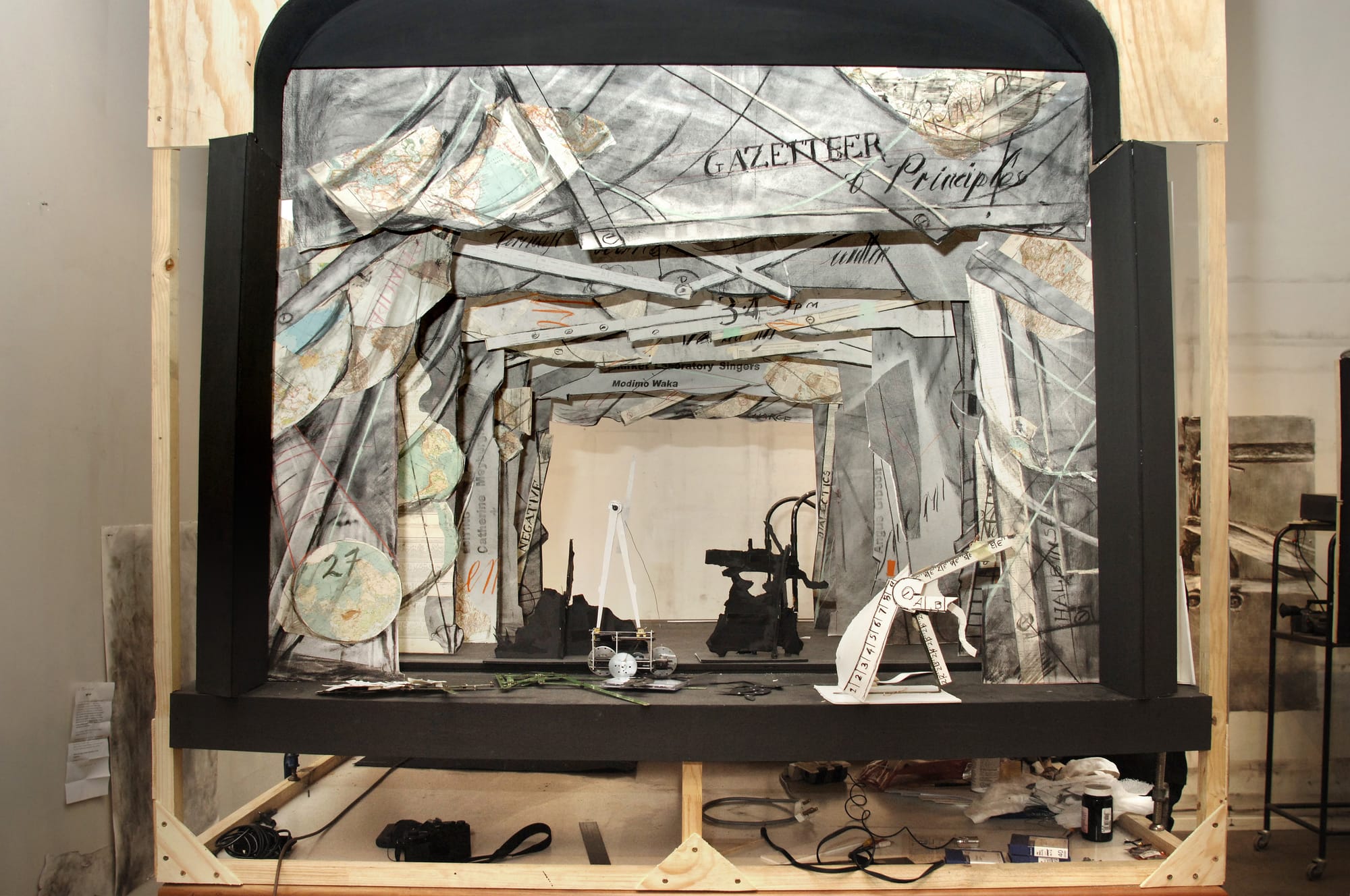
A major retrospective dedicated to the internationally acclaimed South African artist William Kentridge is underway in the German states of Saxony and North Rhine-Westphalia. Museum Folkwang in Essen and Staatliche Kunstsammlungen Dresden have teamed up to organize this exhibition on the occasion of the artist's 70th birthday. The retrospective, titled Listen to the Echo, covers the past four decades of Kentridge's career.
Born in Johannesburg in 1955, Kentridge grew up in a South Africa that was suffering under apartheid. The destructive effects of this social division were instrumental in forming his creative practice. A keen sensitivity to social injustice permeates Kentridge's vast oeuvre, which encompasses films, drawings, sculptures, prints, theater and opera productions.
The exhibition at Museum Folkwang presents a series of short films from Kentridge's multi-decade project Drawings for Projection (1989-2020), in which he documents the rise and fall of Johannesburg and the bitter legacy that apartheid has left behind in South Africa. In his series of drawings Colonial Landscapes (1995-6), which consists of several large charcoal drawings inspired by late 19th-century sketches of the South African landscape, Kentridge reinterprets their idyllic imagery and reminisces about the impact that European colonialism and exploitation has on the land and people.

The Porter tapestries are a series of 15 handwoven tapestries designed by Kentridge and executed by the Stephens Tapestry Studio in Johannesburg. The themes of migration and ‘portage’ bind these individual works together – silhouetted images of figures laden with artefacts are depicted traversing maps extracted from an 18th century French school atlas. Another work, Black Box/Chambre Noire (2005), is a unique installation consisting of a mechanical theater, drawings and animated film in which Kentridge reassesses the philosophical legacy of the Enlightenment. Through it, he ponders the adverse implications that the Enlightenment had on forming Europe's colonial policy, with a special focus on the German massacre of the Herero people in Southwest Africa between 1904 and 1908.
Staatliche Kunstsammlungen is presenting Kentridge's work at three locations simultaneously. The theme of processions as a metaphor for human community permeates the artworks on view. At the Kupferstich-Kabinett, the full extent of Kentridge's versatility in printmaking is on display; each of the prints exhibited reveals the author's fascination with the phenomena of creation and collaboration. In the Albertinum, Kentridge's video installation More Sweetly Play the Dance (2015) manifests the concept of procession and is contrasted with the preparatory drawings made for the porcelain tile painting Procession of the Princes. In his 2022 film Oh to Believe in Another World, Kentridge draws on four decades of Soviet avant-garde art to create a collage accompanied by Dmitri Shostakovich's music to uncover the precarious nature of utopias.
The Puppentheatersammlung is hosting The Centre for the Less Good Idea for close to a year. A series of experimental and interdisciplinary works utilizing the collection’s puppets will be staged alongside new video and sound installations by Kentridge which incorporate historical museum pieces. The Museum Folkwang exhibition opened on September 4 and is on view through January 18, 2026. The exhibition in Dresden runs from September 4 until June 28, 2026. For more information, visit the Museum Folkwang and Staatliche Kunstsammlungen websites.
